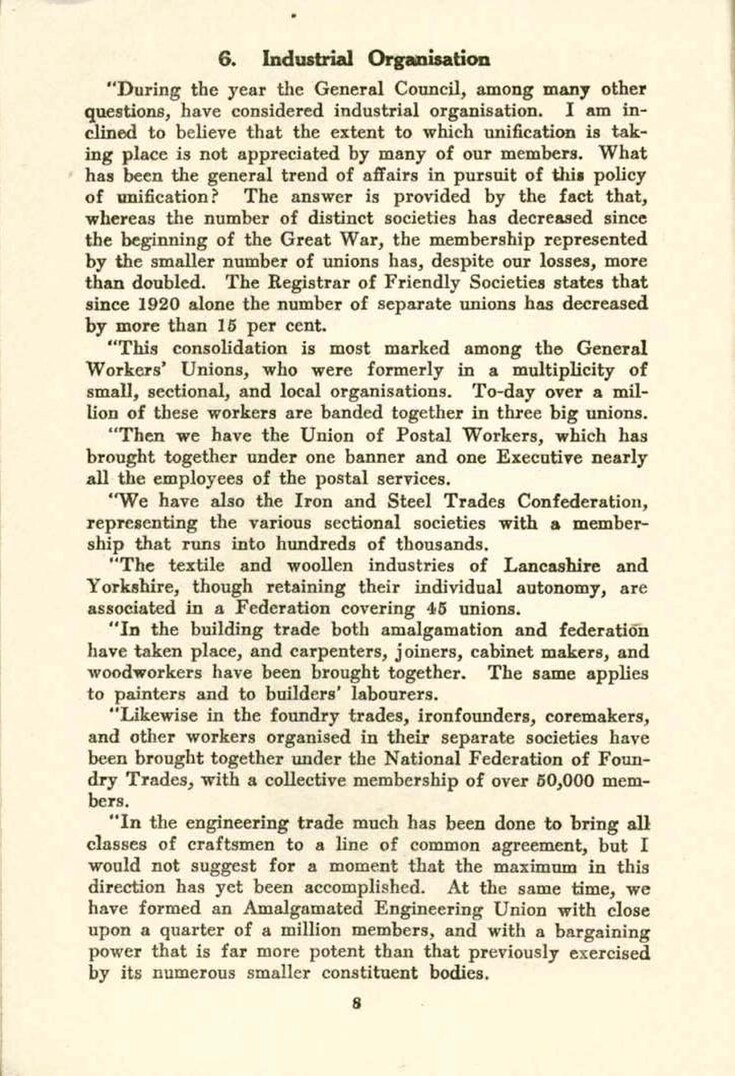6. Industrial Organisation
"During the year the General Council, among many other questions, have considered industrial organisation. I am inclined to believe that the extent to which unification is taking place is not appreciated by many of our members. What has been the general trend of affairs in pursuit of this policy of unification? The answer is provided by the fact that, whereas the number of distinct societies has decreased since the beginning of the Great War, the membership represented by the smaller number of unions has, despite our losses, more than doubled. The Registrar of Friendly Societies states that since 1920 alone the number of separate unions has decreased by more than 15 per cent.
"This consolidation is most marked among the General Workers' Unions, who were formerly in a multiplicity of small, sectional, and local organisations. To-day over a million of these workers are banded together in three big unions.
"Then we have the Union of Postal Workers, which has brought together under one banner and one Executive nearly all the employees of the postal services.
"We have also the Iron and Steel Trades Confederation, representing the various sectional societies with a member- ship that runs into hundreds of thousands.
"The textile and woollen industries of Lancashire and Yorkshire, though retaining their individual autonomy, are associated in a Federation covering 45 unions.
"In the building trade both amalgamation and federation have taken place, and carpenters, joiners, cabinet makers, and woodworkers have been brought together. The same applies to painters and to builders' labourers.
"Likewise in the foundry trades, ironfounders, coremakers, and other workers organised in their separate societies have been brought together under the National Federation of Foundry Trades, with a collective membership of over 50,000 members.
"In the engineering trade much has been done to bring all classes of craftsmen to a line of common agreement, but I would not suggest for a moment that the maximum in this direction has yet been accomplished. At the same time, we have formed an Amalgamated Engineering Union with close upon a quarter of a million members, and with a bargaining power that is far more potent than that previously exercised by its numerous smaller constituent bodies.
8
